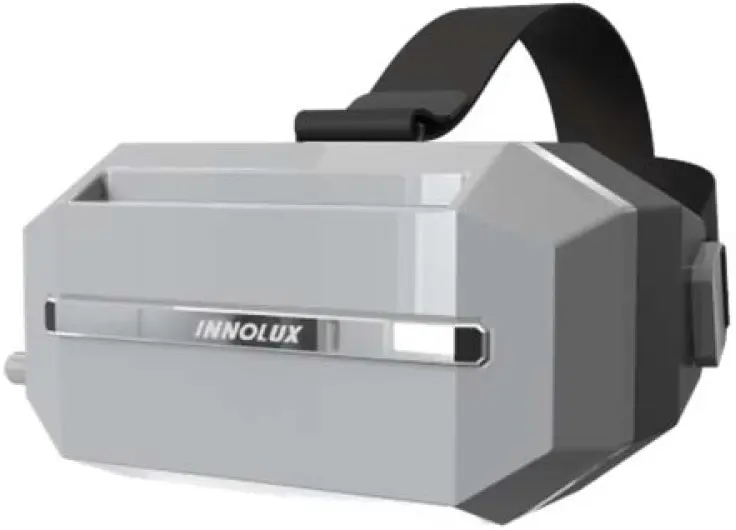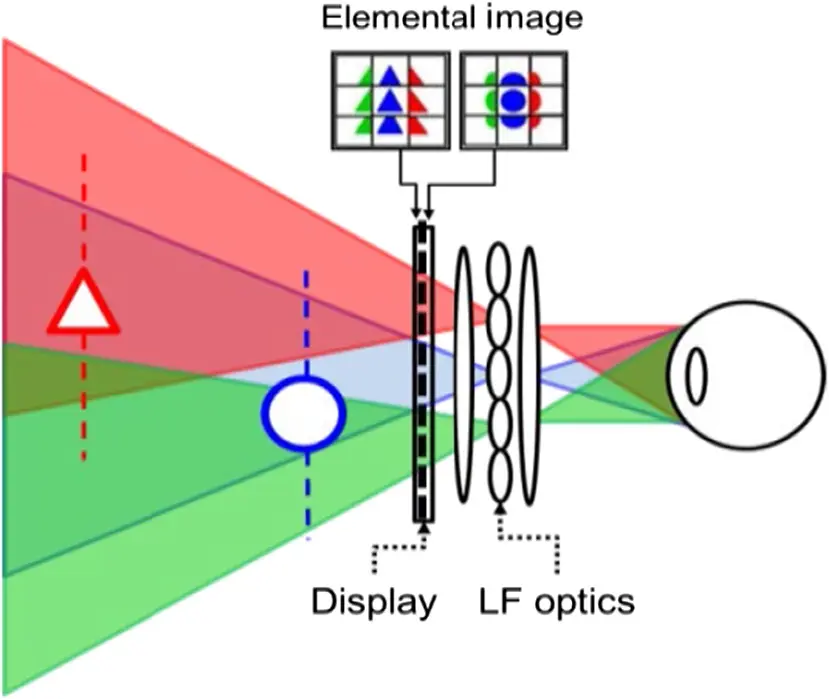Researchers from Innolux in Taiwan have an interesting take on near-eye displays with a focus on overcoming challenges faced by light field technology in virtual reality (VR).

Using a 3.1-inch 3K3K LCD, they address the previous constraints of light field VR displays such as limited size, resolution, and viewing angles. The researchers believe their work underscores the significance of high-resolution LCDs for better light field resolution.
The paper talks about another significant advantage of light field technology: its potential to correct vision issues. This means that, in the future, these near-eye displays could not only provide visual experiences but also adjust to a user’s vision imperfections, enhancing comfort and overall user experience. The paper presents corrected eye box mapping, a ray tracing technique to correct visual anomalies like myopia, hyperopia, and astigmatism in VR.

Light Field Displays
Researchers have been trying various methods to improve the quality and performance of near-eye displays. One of the promising techniques they’ve looked into involves using light field displays, which can offer a more realistic and immersive visual experience. However, there were initial problems with these light field displays: they were often too small and didn’t have a high enough resolution. This meant users had a limited view and sometimes experienced visual issues, known as screen window effects because of this low resolution.
A light field display renders scenes by emitting light rays in such a way that they reconstruct the light field of the original scene in the viewer’s space. Technically speaking, the light field is a 5D function, with x,y,z spatial coordinates and θ,φ angular coordinates. The function represents the radiance of light traveling along rays in free space.
Light field displays are designed to reproduce both spatial and angular variations in light. Spatial resolution represents the details in the scene, while angular resolution represents the different directions from which light comes. The higher the angular resolution, the more the viewer can change their viewing direction and still see a consistent 3D scene.
Traditional light field displays often use an array of microlenses (or other optical components like beam splitters) placed over a spatial light modulator (in this case an LCD but it could be an OLED, for example). Each microlens focuses the display’s pixels to project “elemental images” that contribute to different angular components of the light field. Given the finite resolution of available displays, light field displays multiplex information across pixels. Multiplexing can be achieved either spatially, where different regions of the display are allocated to different views, or temporally, where different views are shown in rapid succession. In this instance, the researchers used a corrected eye box mapping method, a ray tracing technique to correct visual anomalies like myopia, hyperopia, and astigmatism in VR.
One significant advantage of light field displays over traditional stereoscopic 3D displays is their ability to reproduce multiple depth cues, like accommodation and binocular disparity, simultaneously. This is crucial for a comfortable and immersive 3D viewing experience. Reconstructing the light field from captured data or 3D models often requires extensive computation, particularly for rendering the appropriate elemental images for the display. Algorithms like ray tracing or wavefront propagation methods can be employed.
The chief limitation of light field displays is the trade-off between spatial and angular resolution due to the multiplexing nature of current designs. Capturing or creating high-resolution light field data can also be computationally intensive and may require specialized cameras or algorithms.
Reference
Yung-Hsun Wu, Chuan-Chung Chang, Yu-Shih Tsou, Yi-Chien Lo, Chia-Hao Tsai, Chih-hung Lu, Chiu-Lien Yang, and Fu-Ming Chuang “Enhancing virtual reality with high-resolution light field liquid crystal display technology,” Journal of Optical Microsystems 3(4), 041202 (13 September 2023). https://doi.org/10.1117/1.JOM.3.4.041202

